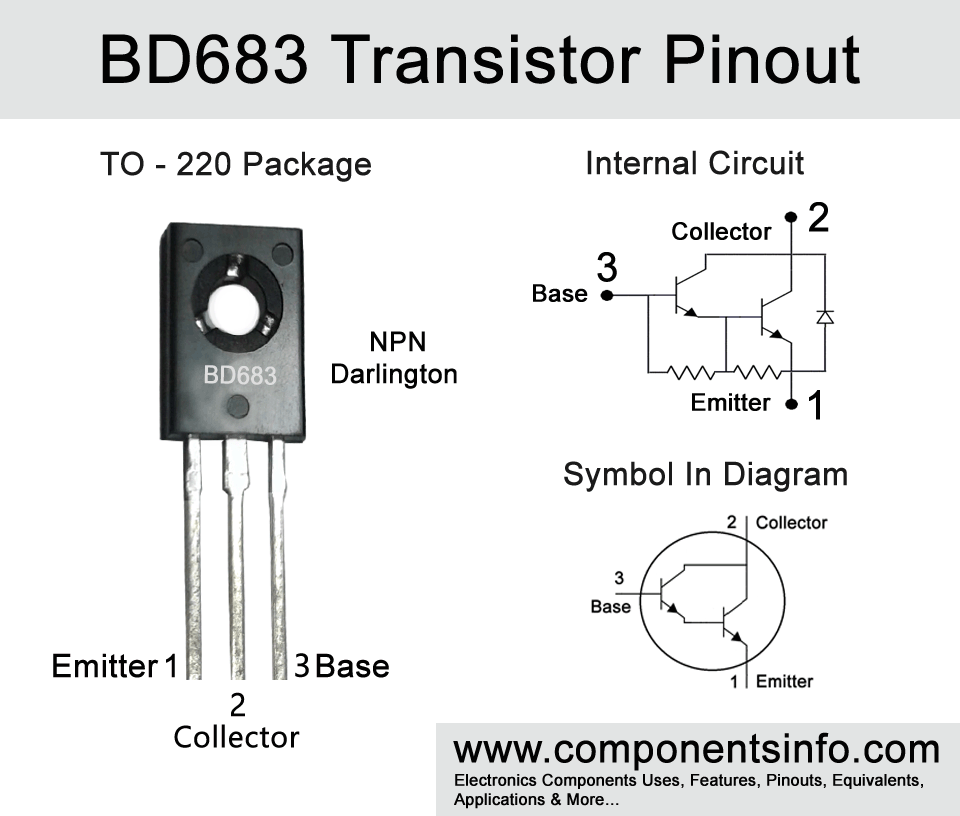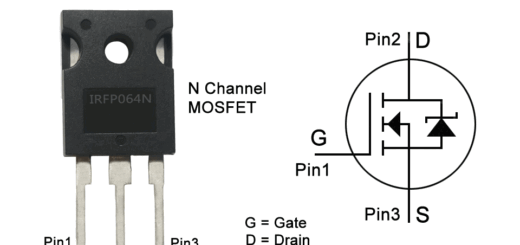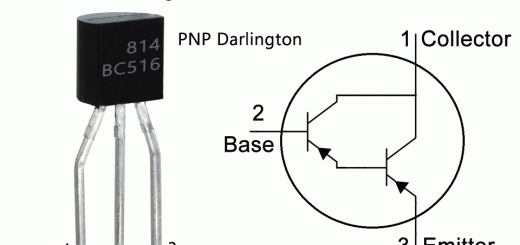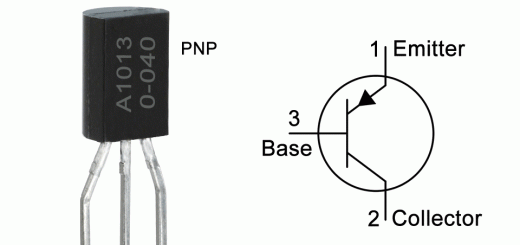BD683 Transistor Pinout, Equivalents, Applications, Features and Many Other Useful Info
BD683 is a NPN darlington transistor of BD68xx series available in TO-126 package. This post explains BD683 transistor pinout, equivalents, applications, features and many other useful information.
Absolute Maximum Ratings:
- Package Type: TO-126
- Transistor Type: NPN Darlington
- Max Collector Current(IC): 4A
- Max Collector-Emitter Voltage (VCEO): 120V
- Max Collector-Base Voltage (VCBO): 140V
- Max Emitter-Base Voltage (VEBO): 5V
- Max Collector Power Dissipation (Pc): 40 Watt
- Minimum DC Current Gain (hFE): 750
- Max Storage & Operating temperature: -65 to +150 Centigrade
PNP Complementary:
PNP Complementary of BD683 is BD684
Replacement and Equivalent:
BD683, 2SD2385A, 2SD2250, 2SD1515, 2SD1299
BD683 Transistor Explained / Description:
BD683 is an NPN Darlington transistor available in TO-126 package. It is the transistor of BD6xx series which also contains other transistors such as BD675, BD675A, BD677, BD677A, BD679 BD679A, BD680, BD681 and BD682. The transistor is designed to be used for amplifier and switching purposes but can also be used in wide variety of other general purpose applications.
The absolute maximum ratings of the of the transistor are collector-emitter voltage of 120V, collector-base voltage of 140V, collector current continuous is 4A, emitter-bae voltage is 5V, base current is -0.1 ampere and collector power dissipation is 40W.
Now looking at the electrical characteristics of the transistor the minimum and maximum DC current gain of the transistor is 750 to 2200, collector-emitter saturation voltage is 2.5V and collector cut off current is 0.2mA.
Where We Can Use it & How to Use:
As mentioned above the transistor is designed to be used in amplifier and switching applications but can also be used in variety of other applications.
To use the transistor first check its pinout after that it depends on how you want to use it such as a switch or amplifier. Using the transistor as a switch is straight forward for doing so connect its emitter with the negative supply, its collector with the negative supply of the load and the load’s positive wire will be connected with the positive rail of the circuit. The base of the transistor will be connected with the signal you want to drive the load. Now using the transistor as an amplifier it is important to know that there are many different types of amplifier circuits so it depends on which type you require. Here we are discussing a simple one transistor amplifier circuit. To make the circuit connect the emitter of the transistor to the negative supply. The base of the transistor will be connected with the signal you want to amplify through a 22uF capacitor, connect a 2.2K resistor between transistor base and its collector. The collector of the transistor will also be connected to the negative wire of the speaker and the positive wire of the speaker will be connected with the positive supply of the circuit.
Applications:
Motor Control
Switching Circuits
Audio Amplifiers
LED Drivers
Pulse Generator
Voltage Regulation
Voltage inverters
DC to DC Converters
Power Supplies
Battery Operated Applications
Safe Operating Guidelines:
Here are some guidelines to safely operate the transistor.
- For getting long term performance do not use the transistor to its absolute maximum ratings and always stay 20% below from its maximum ratings.
- So by looking at the above rule the max collector current of the transistor is 4A so do not drive more than 3.2A.
- The maximum collector-emitter voltage is 120V therefore do not drive load of more than 96V.
- And always make sure that the transistor should not be exposed at temperature below -55°C and above 150°C.
Datasheet:
To download the datasheet just copy and paste the below link in your browser.
https://datasheetspdf.com/pdf-down/B/D/6/BD683-INCHANGE.pdf



